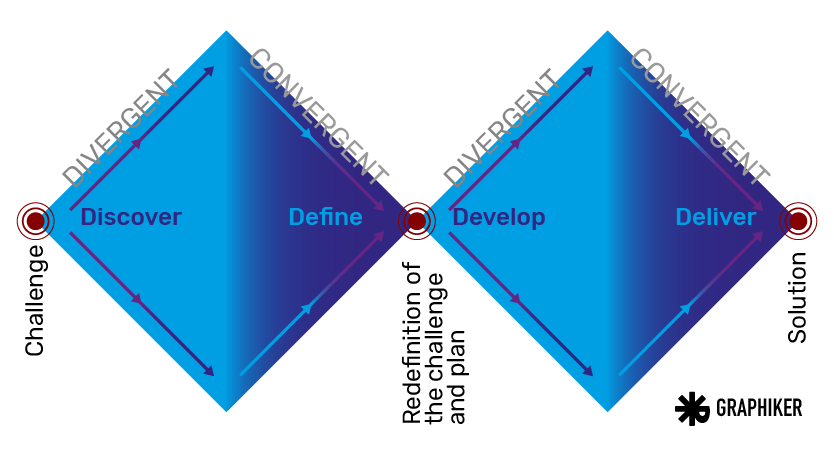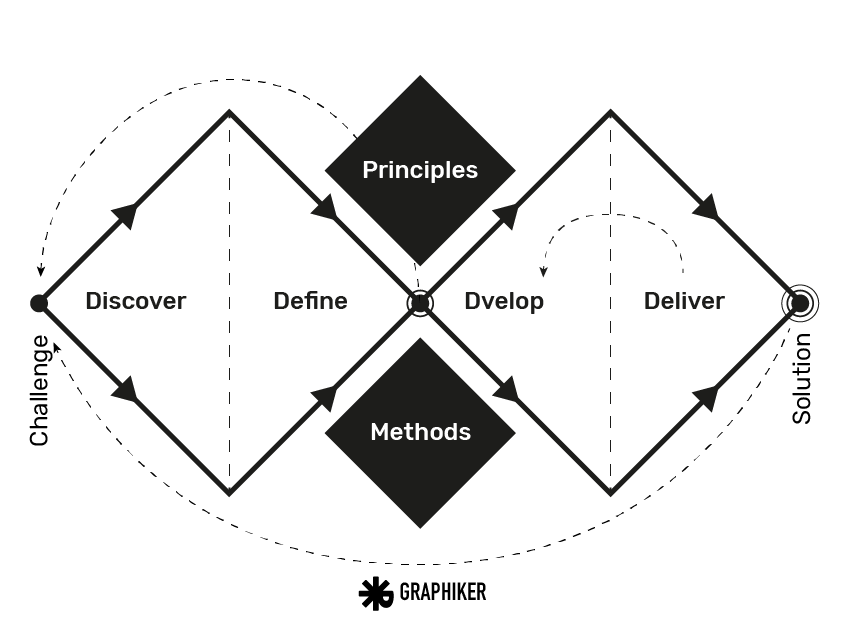Introduction to Design Methodologies
What is a Digital Product?
A digital product is a piece of software that encompasses the technical, human, methodological, and management specifications necessary for its development and operation. This means that a digital product is not just about coding but also involves strategic planning, user experience design, interface design, and technical implementation. In a fast-evolving digital landscape, creating a successful digital product requires collaboration across multiple disciplines to ensure it meets the needs of users while being technologically feasible and business-viable.
Key Roles in Digital Product Development
- UX Design: This role focuses on ensuring that the user’s experience while interacting with the product is seamless, intuitive, and enjoyable. UX designers conduct research, analyze user behavior, and create prototypes to enhance usability.
- UI Design: User Interface designers work on the aesthetic and interactive elements of the product, ensuring that it is visually appealing and easy to navigate. They choose color schemes, typography, and layout structures that enhance user engagement.
- Front-end Development: Developers in this role implement the visual design and interactive elements using code. They ensure that the user interface functions smoothly across various devices and browsers.
- Back-end Development: These developers manage the server-side logic, databases, and overall application infrastructure. They ensure that data is processed efficiently, stored securely, and retrieved correctly for front-end components.
Design Thinking Methodology

The Double Diamond model is a structured representation of the design process proposed in 2004 by the British Design Council. This model helps in understanding the systematic approach to solving problems and creating innovative solutions. By breaking down the process into distinct phases, it ensures that designers explore a problem fully before defining a precise solution.
The diamond shape visually represents the principles of divergent and convergent thinking, as proposed by Béla H. Bánáthy in 1996. Divergent thinking is an exploratory phase where a wide range of ideas and possibilities are considered. This could include brainstorming sessions, research, and analysis of user behavior. Conversely, convergent thinking refines these ideas, narrowing them down to focused, actionable solutions that address core needs effectively.
The Two Diamonds in the Model
The two diamonds in the model illustrate the alternating processes of divergence and convergence at different stages of research and solution design:
- Identifying the challenge: Clearly define the issue at hand by understanding its scope, impact, and context within the user’s journey. A well-defined problem statement lays the foundation for effective solution development.
- Research and discovery: Conduct thorough investigations to gather relevant data and insights about the situation. This could involve user interviews, surveys, competitive analysis, and observational studies to understand underlying needs.
- Define insights: Synthesize research findings to uncover key insights and patterns. By distilling complex information, designers can identify core issues that need addressing in the product development process.
- Reframe the problem: Utilize strategic questioning techniques, such as “What if instead of…?” or “How might we…?” to challenge assumptions and explore alternative approaches to the problem.
- Design solutions: Generate multiple potential solutions based on insights gathered. These ideas are refined through sketches, wireframes, and prototyping to test their feasibility and effectiveness.
- Deliver, test, and iterate: Develop functional prototypes, conduct user testing, and iterate based on feedback. This phase ensures that the final solution is refined to best meet user needs and business goals.
The first diamond focuses on ensuring the solution is well-founded and thoroughly researched, while the second diamond emphasizes validation through iterative testing and refinement.
Framework Updates

In 2019, the British Design Council introduced updates to the framework, incorporating new design principles and methodologies. This revision highlighted the importance of iterative processes, interactive workflows, and cross-functional collaboration. It also underscored the role of leadership and team dynamics in driving innovation and ensuring successful project execution.
Advantages of Design Thinking
- Adaptability: Design Thinking is highly adaptable, allowing teams to tailor the process to fit different industries, challenges, and user requirements. It places the user at the center of the design process to ensure practical, human-centric solutions.
- Data-driven decision making: This methodology relies on research, analytics, and testing to validate design choices. By leveraging quantitative and qualitative data, teams can make informed decisions that improve product performance and user satisfaction.
- Encourages flexibility: Design Thinking fosters an agile mindset, enabling teams to pivot when necessary and explore new opportunities without being constrained by rigid frameworks.
- Promotes creativity and innovation: By encouraging experimentation, open-mindedness, and diverse perspectives, this methodology facilitates the discovery of breakthrough ideas and unique solutions.
- Facilitates teamwork and collaboration: It brings together professionals from different disciplines, fostering collaboration and ensuring that solutions address multiple perspectives and expertise areas.
Disadvantages of Design Thinking
- Risk of poor management: If the process is not structured and facilitated properly, it can lead to confusion, lack of direction, and unproductive discussions, ultimately affecting project outcomes.
- Fast-paced nature: The iterative and rapid nature of Design Thinking can be overwhelming for individuals who lack experience with agile workflows, requiring them to adapt quickly to changing requirements and continuous feedback loops.
Diving Deeper into the First Diamond
The first diamond consists of five essential stages, each designed to deeply understand the problem before progressing towards designing a solution. By systematically exploring and refining the issue, teams ensure that they develop well-informed, user-centered solutions that effectively address the challenge at hand.